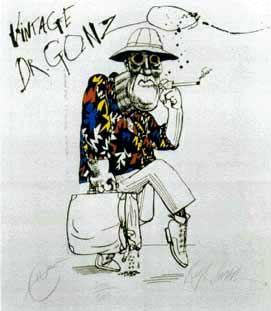Ghetto Fabulous
 Notice a change along Albany’s Henry Johnson Boulevard this last couple of weeks? Or maybe along the Pine Hills neighborhood a bit further uptown? Well if you didn’t, then you missed the urban renewal efforts by the Times Union and city officials, in an effort to finally do away with those troublesome areas of Albnay where crime seems to percolate
Notice a change along Albany’s Henry Johnson Boulevard this last couple of weeks? Or maybe along the Pine Hills neighborhood a bit further uptown? Well if you didn’t, then you missed the urban renewal efforts by the Times Union and city officials, in an effort to finally do away with those troublesome areas of Albnay where crime seems to percolateBut unlike urban renewal efforts of old, this new campaign focuses around a relatively cutting edge concept of social development. Instead of tearing down blighted areas and paving over them, simply pretend they don’t exist; maybe even wipe the streets off the map and erect giant blinders around them so that they’re not visible; if you pretend hard enough, perhaps the problem will go away.
First, there was the police effort late last month –in collaboration with both St. Rose College and the University at Albany –to create “safe corridors” through what is known largely as the student ghetto. The idea is to ramp up police patrols and lighting on Ontario and Quail streets as well as Washington and Western Avenue; spiffy blue and orange signs will soon designate these safe routes for the many bibulous students pouring down them each week like a pint of cheap beer spilled off the bar.
Miss a sign and end up on a side street? Well you’re out of luck and into the crime blotter.
 The message from the cops is simple: stick to the major throughways, ‘cause we’re not patrolling that slum you kids call home. In other words, abandon ghetto; head for the gentrified streets of Manning Boulevard. Now, perhaps the urban justice that seems to function so well in West Hill and Arbor Hill can move into Pine Hills. Pretty soon, the cops will be able to simply wheel a hearse through these neighborhoods and collect the corpses each Sunday morning.
The message from the cops is simple: stick to the major throughways, ‘cause we’re not patrolling that slum you kids call home. In other words, abandon ghetto; head for the gentrified streets of Manning Boulevard. Now, perhaps the urban justice that seems to function so well in West Hill and Arbor Hill can move into Pine Hills. Pretty soon, the cops will be able to simply wheel a hearse through these neighborhoods and collect the corpses each Sunday morning.Then there’s the Times Union’s strategy of urban renewal, which relies more on simply not printing anything that might suggest there’s a burgeoning problem in Albany and has been one for many years. In a moment of unbridled political correctness, the paper printed an online-apology for using the word “ghetto” in a story about a rape late last month nearby the bars of Pearl Street and at the mouth of Arbor Hill. In this case, “ghetto” was printed as part of a quote –ironically as it was in the article about safe corridors just two days earlier –and came from a fellow skulking around the liquoring district late Friday night.
“That's the thing with Albany, there's always a ghetto nearby,” bar crawler John Glushowski opined to a TU reporter in a quote that many city folk would consider innocuous, if they bothered to consider it at all.
Still, the TU eds nearly tripped over themselves to write an appeal when several complaints –they never specified how many –came in the next day. Soon, there was a heart-felt apology posted on the editor’s blog, making amends for being so callous and insensitive with their reporting. But the apology then drew even more criticism from online readers for the paper wanting to “censor” language in the paper.
To this, the paper responded with an even more milquetoast answer about their reporters needing to “exercise good judgment in deciding when a quote best illuminates” a story. In this case, they argued, the quote added unnecessary “racial overtones” and didn’t do anything to answer the underlying question: do bar patrons feel safe downtown? Well, taking Glushowski’s quote either in or out of context, it’s safe to say that’s a big, fat, bold-faced no.
True, the word ghetto has predominantly negative connotations that indeed hum audibly of with racial undertones. But in the case of Albany, the word ghetto rings loudly down the streets of the city’s poorest neighborhoods, whether they happen to be populated by students, minorities or both.
 Perhaps that’s why these areas remain in the sordid condition they do, because there aren’t enough folks on the outside willing to admit these failed streets of row housing are nothing but down-trodden ghettos, inhabited by those who have been pushed off the radar screen for one reason or another. Just don’t walk down the streets, drive there or mention them by name, lest you draw a sense of social awareness to it.
Perhaps that’s why these areas remain in the sordid condition they do, because there aren’t enough folks on the outside willing to admit these failed streets of row housing are nothing but down-trodden ghettos, inhabited by those who have been pushed off the radar screen for one reason or another. Just don’t walk down the streets, drive there or mention them by name, lest you draw a sense of social awareness to it.


3 Comments:
Nice job, Alger. That TU editor is a twit who'd do well as some kind of totalitarian bureaucrat. Good work.
That's such bullshit... This world is so PC now it makes me want to vomit.
With the Don Imus "incident" and the "Ghetto" concerns, it appears the thought police are in full force these days.
Post a Comment
<< Home